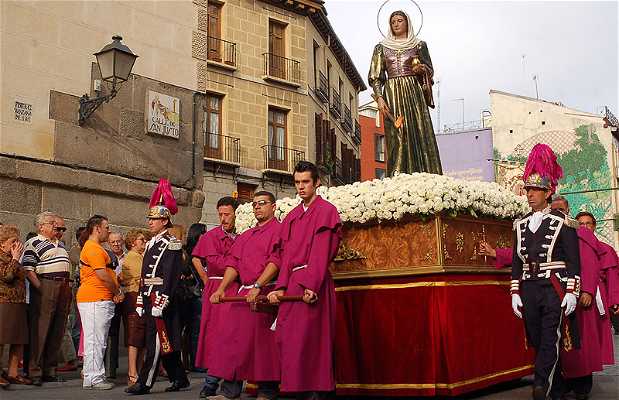naxos
Every May 15 is celebrated in Madrid...
Cada 15 de Mayo se celebra en Madrid el...
Cada 15 de Mayo se celebra en Madrid el día de San Isidro, uno de los patronos de la ciudad y probablemente el santo más emblemático que tenemos por aquí. Reconozco que mi interés principal en esta festividad es que suele hacer un puente la mar de majo casi todos los años a mediados de Mayo. Esta circunstancia, claro, invita a abandonar la ciudad por estas fechas.
Para los que se quedan en Madrid, sin embargo, se ofrece la posibilidad de disfrutar de las celebraciones tradicionales del día de San Isidro, una de las cuales es presenciar la procesión de la imagen del santo (y de su mujer, Santa María de La Cabeza). Es una ocasión única para ver gente vestida a la manera tradicional de “los madriles” (como chulapos y chulapas).
Every May 15 is celebrated in Madrid the day of San Isidro, one of the patrons of the city and probably the most emblematic saint we have here. I recognize that my main interest in this festival is that it tends to bridge the sea of majo almost every year in mid-May. This, of course, invited to leave the city at this time. For those staying in Madrid, however, the possibility to enjoy the traditional celebrations of San Isidro, one of which is to witness the procession of the image of the saint (and his wife, Santa María de La is offered Head). It is a unique opportunity to see people dressed in the traditional way of "madriles" (as chulapos and chulapas).



+4

